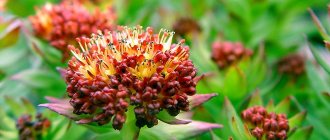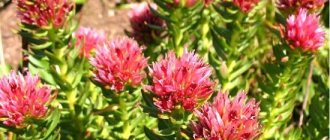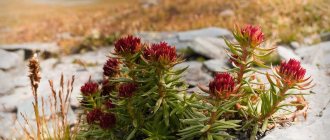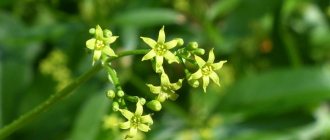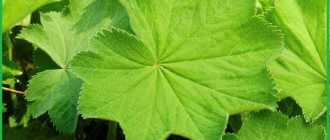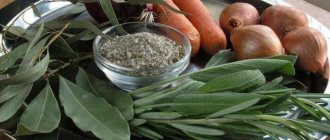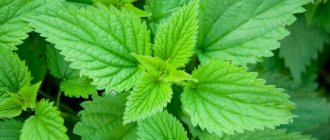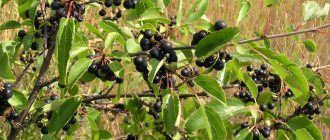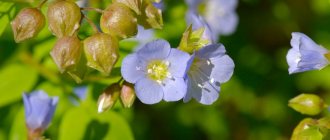Rhodiola rosea (pink, golden root) is a herbaceous perennial plant from the Crassulaceae family. It has a distinctive feature: the root and rhizomes are the color of bronze or old gilding with a noticeable pearlescent sheen, due to which it received its second “precious” name. The plant is included in the Red Book of the Russian Federation.
It is found in regions with temperate and cold climates, including Great Britain, North America and Ireland, grows well in alpine mountain meadows (in the Pyrenees, Alps, Carpathians), found in Kazakhstan, grown in China, Bulgaria, India. In the Russian Federation it is found in Altai and the Urals, in the mountainous regions of the Far East, Eastern and Western Siberia, in the polar regions of Yakutia, on the coasts of the Barents and White Seas. The plant is undemanding to light and heat, but needs plenty of moisture. It grows on rocks and rocky outcrops, in flat tundra, on the banks of mountain rivers and streams.
It has long been used in folk and official medicine as an effective adaptogen that increases resistance to adverse environmental factors, as well as a stimulant of the central nervous system. Part of the group of adaptogens, it combines and competes with eleutherococcus and ginseng.
Morphological description
The rhizome is horizontal, powerful, covered with a brown (bronze) cork, and has thin adventitious roots. When broken, the root is white, has a bitter-astringent taste, and has a special aroma, similar to the smell of a rose.
Most often, the plant has several (10-15 pieces) non-branched erect stems, 10-40 cm high, less often there is only one stem. The leaves are alternate, sit on stems, have an oblong-ovate, elliptical or pointed shape with a whole or serrate-toothed upper part.
Flowering occurs in June-July, fruits reach maturity in July-August. The inflorescence is multi-flowered and has a corymbose shape. The flowers are yellow, unisexual, four-, less often five-membered. The fruits are erect, multi-leafed, green.
Propagated both by seeds and vegetatively.
General characteristics of the plant
Rhodiola rosea is a perennial herbaceous plant. Acceptable name is rose/golden root. The etymology of the alternative name is simple - the rhizome of the plant is painted the color of old gold, which gives off a specific pearlescent sheen.
Botanical description
Rhodiola is a succulent dioecious plant with a powerful horizontal rhizome and miniature oblong adventitious roots. Erect stems emerge from the dense rhizome. In total, up to 15 stems with a height of 10 to 40 centimeters can develop. Rhodiola with a single stem is extremely rare. The leaves are alternate, sessile, and acquire an elliptical shape of an elongated egg; less often, pointed leaves with a solid edge or a serrated upper part are found.
Content:
- General characteristics of the plant
- Features of the composition
- Rhodiola as an adaptogen
- Pharmacological action of the plant
- Application of the component in various industries
- Possible harm and contraindications for use
Inflorescences are formed from several yellow flowers. They are painted in a bright yellow shade. Later, greenish, erect fruits form from the flowers. Rhodiola blooms from June to July. Fruit ripening occurs in July-August. The plant reproduces in two ways: vegetative and seed.
Rhodiola is not particularly demanding on environmental conditions. The main thing is that the plant receives the necessary amount of moisture. Abundant flowing moisture is the key to high-quality growth and development of fruits. Rhodiola does well without a lot of heat or sunlight. This does not affect the quality, chemical composition and beneficial properties of the plant.
Territorial distribution
The plant prefers cold, temperate climates. The largest percentage of Rhodiola plantings are concentrated in North America, Ireland, Great Britain, the Alps, the Carpathians, the Pyrenees, Altai, the Urals, on the coast of the White/Barents Sea and in the mountainous regions of Siberia.
Brief historical background
Ancient Chinese emperors mounted massive expeditions to Altai and other mountainous regions to obtain golden root. In addition to high-ranking government officials, Rhodiola was the subject of interest for smugglers. They found plantings, plucked everything they could steal and smuggled goods across the border. Previously, Rhodiola root was considered the greatest rarity, and its cost was several times higher than the price of gold.
In Altai there is still a proverb: “Whoever finds the golden root will live up to 120 years in health and happiness.”
Collection, preparation and reproduction
The root of Rhodiola rosea is harvested for future use (the plant is 3-4 years old). This is done between the end of July and September. The roots are dug up, thoroughly washed to remove soil particles in cool water, and cleaned of brown plugs and rotten, dry areas. Cut the rhizome into pieces, each 10 cm long, and dry them at 50 degrees in a dryer.
The finished raw material has a pinkish or white color when broken. If the root is brown in color at the break, it is unsuitable for use because it loses its beneficial properties. Store dry raw materials in canvas bags in a dark place. Shelf life – 3 years.
Most often, the plant is propagated by seeds: planted in late autumn or winter in a box with nutritious soil, providing good ventilation (expanded clay is placed on the bottom). The soil is pre-moistened with a weak solution of potassium permanganate and compacted a little. The seeds are evenly distributed over the surface and lightly pressed, covered with soil (2 mm layer), covered with film and placed on the balcony. In March, the box is moved to a warm, illuminated place, and within a couple of days shoots will appear. They can be replanted when two true leaves appear.
You can propagate a plant (which is at least 2 years old) by dividing the rhizomes into 2 parts, which are planted in prepared holes with humus; compost is also laid on top, leaving renewal buds on the surface.
Geography of distribution and homeland of growth
Altai is considered the birthplace of Rhodiola rosea. However, it is also found in other countries and regions:
- China;
- Bulgaria;
- Mongolia;
- throughout Russia;
- in Eastern Kazakhstan;
- Siberia.
The plant is widespread on rocky soils, as well as in the tundra. Its habitats include:
- rocky terrain;
- banks of mountain rivers;
- banks of streams.
Rhodiola rosea in nature
Chemical composition
The root of the plant contains more than 140 useful elements, which determine the complex positive effect.
- Phenols and their derivatives: tyrosol, salidroside. Strengthen the circulatory system, protect blood vessels from narrowing. Prevents cholesterol oxidation;
- Carbohydrates: glucose, fructose, sedoheptulose, sucrose. Participate in energy metabolism;
- Organic acids: oxalic (stimulates gastric secretion and intestinal function),
- apple (normalizes digestion, improves the condition of blood vessels, improves vision and is involved in metabolism),
- amber (neutralizes free radicals, reduces uric acid levels, restores joint mobility, stimulates insulin production),
- lemon (increases appetite, stimulates cell renewal, activates the immune system);
Straight chain aliphatic alcohols and monoterpene hydrocarbons were found in the essential oil. The composition of the essential oil varies depending on where the plant grows.
The aboveground part of the plant is saturated with organic acids (malic, citric, oxalic, succinic), phenols and their derivatives, phenolcarboxylic acids (gallic, caffeic), coumarins, tannins, and flavonoids.
Diseases and pests of Rhodiola rosea
As for parasites, Golden can be attacked by weevils. This parasite primarily affects the above-ground part of the plant. Insect larvae gnaw small holes in the leaves, causing them to turn yellow. Pest larvae can also infect the stem itself, making many holes in it. To get rid of weevils, it is best to shake the succulent with your hands and remove the parasites. The use of pesticides is not recommended.
Another insect pest of Rhodiola rosea is aphids, which can be washed off with good water pressure.
Root rot in most cases occurs in poor soil, where the root system begins to rot as a result of constant moisture. The disease can be prevented by adjusting the frequency of watering and replanting the plant in properly mixed soil.
Beneficial features
Golden root (rhodiola) is characterized by many beneficial properties:
- is a powerful antioxidant and adaptogen;
- protects the body from the development of cancer and prevents tumor metastasis;
- increases blood pressure;
- improves heart function;
- fights pathogenic microorganisms;
- has an anti-inflammatory effect;
- promotes bile secretion;
- stops bleeding;
- restores the body after overwork, tones well;
- has a general strengthening effect and increases the body’s resistance to the influence of unfavorable environmental factors;
- has a neuroprotective effect;
- stimulates the central nervous system;
- maintains the energy potential of the brain at a high level;
- improves cognitive functions;
- accelerates the course of oxidative processes;
- accelerates wound healing.
Preparing the tincture
There are many recipes for preparing tinctures from the root of the plant.
Recipe No. 1:
- The root is poured with 40% alcohol in a ratio of 1:2.
- Leave in a dark place for one week.
- Take ten drops three times a day before meals.
Recipe No. 2:
- The root is crushed and filled with 40% alcohol in a ratio of 2:1.
- Leave for twenty-five days and filter.
- Take ten drops three times a day.
Recipe No. 3:
- The roots of the plant are poured with vodka in a ratio of 1:2.
- Infuse for twenty days in a dark and cold place.
- Take ten drops three times a day.
Scientific research
Scientific research began in the 60s of the 20th century. In 1961, an expedition led by G.V. Krylov was carried out, during which scientists managed to find the plant in the taiga of the Altai Mountains. Based on research results, the plant was introduced into scientific medicine and began to be used in the form of a liquid extract with adaptogenic and stimulating properties.
Numerous studies have been conducted to study the effect of the plant on the central nervous system. Plant preparations change the bioelectrical activity of the brain and improve cognitive functions: by increasing resistance to stress factors, memory and the ability to remember information improves.
The positive effect of plant preparations has been reported to eliminate the side effects of psychotropic therapy for schizophrenia.
A number of studies have shown that roseola rosea can improve physical performance. An experiment conducted on animals (white rats) recorded a decrease in the rate of glycolysis, the amount of lactic acid in the muscles, the preservation of a high level of phospholipids in the muscles and liver, as well as blood sugar after 2 hours of swimming in individuals receiving the plant preparation.
The possibility of using plant preparations as hepatoprotectors is also being considered. The effectiveness of use as a therapeutic and prophylactic agent for liver damage induced by organophosphorus compounds has been proven in animals.
Rhodiola rosea[edit | edit code]
Rhodiola rosea
Rhodiola rosea
,
golden root (Rhodiola rosea L.)
,
Aaron's Rod
or
Arctic Root
is a medicinal plant that has long been known in the East (and partly in Europe).
Rhizomes and roots are used; they contain glycosides, saponins, sugars, tannins, essential oils, organic acids, fats, waxes, flavonoids, tannins, proteins. The purified aqueous preparation of golden root, rhodosin
, is not used in clinical practice, but is used only for experimental work. Two main active ingredients of Rhodiola rosea have been identified: rhodioloside - n-hydroxy-β-ethanol (or n-tyrosol) and frozen n-tyrosol.
Action[edit | edit code]
Rhodiola rosea
Preparations of Rhodiola rosea have a tonic and stimulating effect and are used for colds, neurosis, asthenic conditions, hypotension; They relieve heart pain, fatigue, and increase physical performance. The stimulating effect of Rhodiola rosea extract on muscle performance is one of the most pronounced (along with Eleutherococcus); it is noted that with long-term use it increases muscle strength. Golden root normalizes the activity of the cardiovascular system (increases diastolic blood pressure during hypotension and reduces elevated systolic blood pressure, mainly reduces high heart rates and increases low ones). It also stimulates mental performance. It is believed that the central effect of golden root is not associated with a direct effect on the cerebral cortex, but is due to its effect on the nuclei of the hypothalamus.
Indications for use
Rhodiola rosea preparations in healthy people:
- as a stimulant for fatigue during the rehabilitation period after somatic and infectious diseases;
- during work requiring increased mental stress;
- for the purpose of prevention, the drug is prescribed several days before the upcoming work;
- healthy individuals with a tendency to asthenia;
- to maintain performance during performance and recovery after prolonged intense physical activity.
Take Rhodiola in the form of a tincture (extract) 1:1 in 40% alcohol, 20-25 drops 2-3 times a day before meals. It is possible to use both single doses and a long (several weeks) course of taking the drug. You can also prepare an aqueous tincture of golden root yourself (the same as with ginseng, just leave it for 10-15 days). It should be taken 2-3 times a day, a tablespoon before meals.
Rhodiola rosea has low toxicity when taken orally.
Contraindications
: Rhodiola rosea preparations should not be used for high blood pressure, elevated body temperature, or emotional agitation.
Scientists from the Perelman School of Medicine at the University of Pennsylvania found[1] that the plant is suitable for use as an antidepressant, as it has been proven to be comparable in effectiveness to sertraline. Moreover, the plant produces much fewer side effects than tablets.
Research[edit | edit code]
In 2004, physiologists at the Catholic University of Leuven in Belgium found that endurance and blood oxygen saturation increased after taking 200 mg of Rhodiola extract. What is blood saturation? The oxygen with which the blood is saturated in the lungs is transferred to the organs using a special carrier protein - hemoglobin, which is contained in red blood cells - erythrocytes. The level of oxygen in the blood or the degree of oxygen saturation of the blood shows how much hemoglobin in the body is in an oxygen-bound state. Normally, almost all hemoglobin is bound to oxygen, with saturation ranging from 96 to 99%. A decrease in the level of oxygen in the blood below 95–96% can be observed in severe diseases of the respiratory and cardiovascular systems, as well as in severe anemia, when there is a significant decrease in the level of hemoglobin in the blood.
Rhodiola rosea is a succulent, a plant that has special tissues to store water. Russian researchers who experimented with Rhodiola root extracts in the second half of the twentieth century discovered that Rhodiola allowed animals to withstand heavy physical and mental stress longer. For example, the rats were able to swim much longer than usual.
Belgian researchers wondered whether Rhodiola rosea would work immediately after dosing or whether it would need time to become active. They conducted an experiment with 24 healthy students. The researchers first determined the students' basal endurance, then repeated the analysis twice: once 1 hour after the students took 200 mg of rhodiola, and again after they took a placebo. Students were required to ride a bicycle with a cyclometer (a device that measures the distance traveled by a bicycle) and increase their energy output by 20 watts every minute until exhaustion occurred. The Belgians used a product made by the German company Finzelberg, which included 3% rosavin and 1% salidroside. After comparing the results of the control and experimental groups, scientists found the following. The group taking Rhodiola had significantly increased pulmonary ventilation capacity (124.8 L/min vs. 115.9 L/min); oxygen saturation increased, as well as the ability to utilize CO2. However, the average volume of lactic acid in the blood and the average heart rate remained virtually unchanged. The supplement increased time to exhaustion by an average of 3%. However, in one subject the time to exhaustion increased by 9.7%. One of the properties of Rhodiola was reminiscent of research on amphetamines. Amphetamines become less effective if you take the same dose regularly over a long period of time. When researchers gave Rhodiola rosea to their students for 4 weeks in a row, they noticed that the ergogenic effect decreased, although not by a statistically significant amount. There is no need to take Rhodiola every day. Just take it an hour before a high-intensity workout or competition to see and feel its benefits. Continuous use will not provide continuous growth in stamina. Unfortunately, Rhodiola rosea does not affect the strength qualities of athletes. Scientists in the US Army conducted tests almost ten years ago to see if Rhodiola increased strength and concluded that it did not.
Rhodiola increases erythropoietin production
Many athletes can improve their endurance performance by supplementing with rhodiola. This bold claim is based on an in vitro study published in the European Journal of Pharmacology. According to a study, salidroside, a component of Rhodiola, increases the production of erythropoietin (EPO). Erythropoietin is a glycoprotein hormone, more precisely a cytokine, the main regulator of erythropoiesis, which stimulates the formation of red blood cells from late progenitor cells and increases the yield of reticulocytes from the bone marrow, depending on oxygen consumption. Erythropoietin preparations are widely used in sports involving high oxygen consumption, such as cycling. It is cycling that is associated with high-profile doping revelations associated with the use of EPO.
Residents of the mountainous regions of Asia use rhodiola extracts to counteract the symptoms of altitude sickness. About two hundred milligrams of Rhodiola extract per day reduces the time of adaptation to an environment with low oxygen content. The Rhodiola rosea plant contains substances such as rosin, rosarin, rosavin and salidroside. The most important and biologically active of them is salidroside. Chinese researchers found that salidroside increased EPO production in kidney and liver cells.
Salidroside increases the concentration of HIF-1a protein (hypoxia-inducible factor 1) in cells. Cells produce HIF-1a when their oxygen supply is limited. HIF-1a stimulates the kidneys to produce more EPO. But how does salidroside increase the concentration of HIF-1a without causing cells to produce it? The mechanism through which salidroside increases HIF-1a concentrations is that it blocks the formation of HIF-1a hydroxide, a derivative of HIF-1a. More precisely, salidroside inhibits the enzymes that convert and neutralize HIF-1a.
The researchers write that in addition to Rhodiola, salidroside extract was obtained from at least two other plants: Cistanche desert and Privet. Although the three above-mentioned herbs contain salidroside as a main component, their pharmaceutical effects differ significantly. This fact leaves many questions for Chinese traditional medicine.
Rhodiola rosea will help you cross the finish line faster
Runners looking to improve their performance could benefit from Rhodiola rosea. According to scientists from Gettysburg College in the USA, athletes' finishing times decrease after taking just one Rhodiola capsule. A few years ago, Russian researchers discovered that test animals given Rhodiola rosea swam longer. However, if people take Rhodiola, the effects will not be as obvious. For example, in some cases it improves physical abilities, and in others it does not. In 2004, Belgian researchers reported that when taking Rhodiola rosea, there is indeed a positive effect initially, but this effect fades away if the supplement is used for a period of several weeks.
In a Belgian experiment, Eric Noreen at Gettysburg College studied the effects of a single dose of Rhodiola rosea. Noreen conducted an experiment with 20 physically active students. Students had to ride an exercise bike twice for a distance of 10 km. The programmed trajectory included a large number of hills with slopes ranging from 1 to 5%. First, the students were given a placebo before they sat on the exercise machine, and the second time they were given a supplement with Rhodiola rosea extract at a dosage of 3 mg per kilogram of body weight. The extract used included 3% rosavin and 1% salidroside. The subjects in the experimental group cycled 10 km in 25.4 minutes. after taking Rhodiola.
The placebo-controlled group took an average of 25.8 minutes. According to the researchers, the effect was statistically significant, as a decrease in time was seen in every subject. "Students noted that cycling was less tiring after taking Rhodiola." During the bike ride, the concentration of the enzyme alpha-amylase in the saliva of students was higher after taking Rhodiola rosea. This indicates a more active work of the sympathetic nervous system, which means that the nervous system stimulated the muscles more strongly in the case of Rhodiola.
How Rhodiola rosea works
Effect of salidroside
If you want to function normally during periods of extreme stress, or if you are an endurance athlete looking to push through more intense activities, you may benefit from taking Rhodiola rosea. Researchers at Zhejiang University have discovered how Rhodiola rosea works.
Diabetes scientists love to play with advanced substances that stimulate the enzyme AMP-activated protein kinase (AMPK). The more AMPK, the more mitochondria, the more fat burned and the more glucose uptake into the muscles. You can prevent type 2 diabetes by adding exercise to your lifestyle, which is excellent at stimulating the same AMPK. Since many people are unable to exercise, they are relying on scientific research to find an effective AMPK booster. Traditional medicine has used Rhodiola rosea for centuries to treat type 2 diabetes, high blood pressure, and to combat fatigue and oxygen deprivation.
It would be great if good old Rhodiola contained a compound that stimulates AMPK. To verify this, the scientists exposed rat muscle cells in test tubes to salidroside, the active ingredient in Rhodiola rosea, for 90 minutes. Salidroside causes muscle cells to take up more glucose and mimics the action of insulin. When the researchers added an AMPK blocker, the synergistic effect of insulin and salidroside disappeared. Therefore, salidroside works through AMPK. The researchers found that salidroside did not increase the amount of AMPK, but salidroside increased the amount of phosphorylated AMPK. Phosphorylated AMPK is an AMPK activator. Salidroside does not directly stimulate the synthesis of AMPK, but it forms molecules that stimulate this synthesis. “These results support the clinical potential of salidroside in the treatment of diabetes and its complications,” the researchers concluded.
Recommendations for use in sports[edit | edit code]
Source:
"Handbook of Sports Pharmacology".
Publisher
: Soviet Sport, 2014
- Carb loading before competition.
- Increasing the level of physical performance.
- Recovery period of the training process.
- Reduced lactic acidosis.
- Increasing the capacity of the electron transport (respiratory) chain.
- Increasing the body's resistance to infection.
- Various maladaptations (overtraining).
- Asthenic conditions.
Application
Rhodiola rosea is a powerful adaptogen that has a visible effect after the first use of the drug! But you can’t take plant preparations every day without reason. Constant stimulation of the body, even with herbal preparations, can lead to an effect opposite to the expected one.
Rhodiola is used for many diseases and pathological conditions, and is characterized by a whole range of pharmacological properties. The most common indications for the use of plant preparations:
- poor appetite;
- metabolic disorders;
- physical and mental fatigue;
- VSD;
- neuroses;
- asthenic condition after long-term illnesses;
- inflammatory processes;
- allergic reactions;
- radiation injuries (acute and chronic);
- reduced visual acuity;
- poor hearing;
- pulmonary tuberculosis;
- anemia;
- oncological diseases;
- bone fracture;
- menorrhagia;
- dysmenorrhea;
- amenorrhea primary and secondary;
- gynecological diseases (adnexitis, polycystic ovary syndrome, fibrocystic mastopathy);
- early menopause;
- impotence;
- oligospermia;
- late puberty;
- toothache;
- headache;
- gout;
- diabetes;
- conjunctivitis;
- angina;
- pyorrhea;
- diarrhea;
- wounds, skin lesions, rashes, abscesses.
Golden root is often used for men and women: it helps with impotence and is indicated for many diseases of the female reproductive system. Plant preparations enhance the functioning of the sex glands, stimulate the ovaries and are widely used in the treatment of early menopause. The plant has a positive effect on potency, and its effectiveness is higher than that of ginseng root.
It has been proven that the plant enhances the effect of cytostatics that cause necrosis of cancer cells: the membrane, core and parts of the cell are destroyed, which leads to its death.
Why is it better to buy Rhodiola rosea at the pharmacy?
It is recommended to purchase medicines based on Rhodiola rosea in pharmacies or specialized institutions licensed to trade in medicines. If necessary, they will be able to provide you with a quality certificate for the purchased product and all the necessary characteristics. Buying goods on the market or from individuals is very risky. Firstly, the assembly time and technology for procurement of medicinal raw materials may be violated. Secondly, an unscrupulous seller may not sell the product you want to purchase.
https://www.youtube.com/watch?v=3vmi0ESZfAc
In cosmetology
This unique plant has also found its application in cosmetology. Golden root extract has a positive effect on aging, sensitive skin and improves its overall condition. The rich biologically active composition allows the use of plant extracts in various creams to give them stimulating and adaptogenic properties, slow down the aging process of the skin, and increase resistance to adverse environmental factors.
Cosmetic preparations with golden root:
- normalize metabolic processes in the skin;
- improve energy metabolism in cells;
- accelerate skin regeneration processes;
- minimizes transepidermal fluid loss;
- increase skin barrier functions;
- slow down the aging process;
- reduce the level of depression.
The most popular cosmetics with golden root: day cream for sensitive skin from “Natura Siberika”, face cream “Clean Line”, day cream “Granny Agafya’s Recipes”.
How does Rhodiola rosea affect women's libido?
Preparations that include Rhodiola rosea, the medicinal properties of which we have examined, also have an unexpected effect - they improve the functioning of the gonads and the reproductive system as a whole, both in women and men. Decreased sex drive is often caused by stress, chronic fatigue, and various diseases. Rhodiola helps overcome fatigue, cope better with stress, suppresses various inflammatory processes, helps to recover and activates blood circulation. The positive effect on health and improved well-being is also expressed in increased attraction to the opposite sex. The long tradition of using Rhodiola as an aphrodisiac speaks to the effectiveness of this remedy.
Pharmaceutical preparations with Rhodiola rosea
Golden root has also found application in official medicine - many drugs and dietary supplements are actively used in the treatment of a number of diseases. Let's look at the most popular ones.
Rhodiola Liquid ExtractThe drug is indicated for increased fatigue, neurocirculatory dystonia of the hypotonic type, neurasthenic conditions, during the period of recovery from severe somatic and infectious pathologies, during periods of mental and physical stress, and also as a means for the prevention of acute respiratory viral infections during periods of epidemics. |
Rhodiola +A dietary supplement recommended for raising tone, increasing performance (mental and physical), and strengthening resistance to adverse environmental factors. |
Rhodiola rosea vis extract in capsules
|
Root
|
The plant is also included in various herbal teas and mixtures.
What is Rhodiola rosea (or golden root)
Rhodíola rósea (Rhodiola rosea) is a herbaceous plant reaching a height of no more than half a meter. Its roots are massive and thick. The stem is erect. The leaves are dark green in color and elliptical in shape. The flowers are unisexual, yellow in color, collected in corymbose inflorescences. Belongs to the Crassulaceae family. The flowering period is June-August. As a result, leaflet fruits of red or yellow-green color are formed.
Rhodiola flowers
Traditional recipes with Rhodiola rosea
Traditional healers have long and successfully used plant preparations for many diseases. The duration of use is determined individually, but it is recommended to take no more than 5 days in a row, after which take a seven-day break.
Tincture of golden root with vodka for hypotension
- Take 50 gr. dry plant root, grind to a powdery consistency, pour in 2 glasses of vodka. Leave in the dark for 14 days, shake occasionally. Strain the finished tincture.
- Take 20-30 drops 3 times a day. 30 minutes before meals. You can start taking 5 drops and gradually increase the volume to the recommended amount.
Tincture of golden root for colds and heart weakness, nervous diseases and pathologies of the gastrointestinal tract
- Take 10 g. roots, chop and pour 1 cup of boiling water. Leave to brew for 4 hours and strain.
- Take half a glass 3 times a day. Externally used as an effective wound healing agent for treating wounds, cuts, and for rinsing the mouth during sore throat.
Decoction
- Improves the functioning of the heart and blood vessels, making them more resilient. Helps with gastrointestinal diseases, uterine bleeding, impotence, improves thyroid function and normalizes blood sugar levels. Eliminates headaches and toothaches. Can be used externally to wipe the skin.
- Take 20 gr. roots, chop and pour 500 ml of boiling water, keep on low heat for 10 minutes. Leave to steep until cool, then strain.
- Take 50 ml 3 times a day.
Tonic decoction
- It has a strong stimulating effect on the central nervous system, which surpasses the effect of black teas and coffee. Therefore, you should not take it every day, but only when necessary.
- Take 1 tsp. root (pre-crushed) and pour 1 liter of water, boil for 10 minutes. and leave for another 40 minutes. in a warm place.
- Take 2-3 glasses during the day (no later than 4 hours before going to bed), adding sugar or honey to the drink if desired.
Collection to strengthen immunity
- Take 20 grams. Rhodiola roots, rose hips and zamanika roots. Add 15 gr. hawthorn fruit, 15 gr. dry nettle, 10 gr. St. John's wort herb, mix. 1 tbsp. pour a glass of boiling water over the collection and place on low heat for 10 minutes. Leave to infuse for 4 hours, covered, and strain. Dilute the resulting volume with 200 ml of boiling water.
- Take 70 ml 3 times a day.
Tincture for anemia and diseases of the female reproductive system
- It also helps with age-related loss of strength, impotence, pulmonary tuberculosis, liver pathologies and diabetes.
- Take 100 gr. chopped roots and pour 400 ml of good vodka over them. Place in a dark place for 7 days.
- Take 30-40 drops 3 times a day. 30 minutes before meals.
Collection for colds and gastrointestinal disorders
- Take equal parts of Rhodiola rosea, bergenia, blackberry, strawberry, raspberry, black currant leaves, cinquefoil flowers, St. John's wort flowers and thyme, mix everything. Take 3 tbsp. dry collection and pour 1 liter of boiling water over them, leave for 60 minutes. Add honey or sugar to taste.
- Take 1-2 glasses per day.
Growing and caring for Rhodiola rosea
Under natural conditions, Rhodiola grows on sandy soils, but if there is good drainage and no waterlogging, it can easily be cultivated in ordinary garden soil. A place for planting should be chosen that is protected from the wind and well lit. Site preparation begins after July 20. Initially, it is dug up, then the necessary fertilizers are added and dug up again. Before planting the plants, make markings using a cord and compact the soil.
When planting, you need to maintain a distance of half a meter between plants, and row spacing is made with a distance of 0.7 meters. The plant is placed in the hole so that the renewal bud is located above the ground. It would be a good idea to mulch new plantings after moistening them a little.
Golden root responds gratefully to feeding. The best solution for this is slurry, which has been mixed for 5 days and then diluted in a ratio of 1:4 with water. Pre-moistened plants are watered with this mixture.
Rhodiola loves sandy soil
